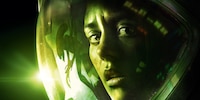
Background information
The scariest gaming moments we’ve ever experienced
by Cassie Mammone

The SBB melody is truly iconic: «dun-dun-dun». But did you ever notice there are three versions of it – and that a secret SBB game has something to do with it?
It’s 12:30 p.m. I’m sittin’ in the railway station the IC1 from Bern to Zurich. The loudspeaker symbol lights up on the screen: «dun-dun-dun Next stop: Zurich Main Station».
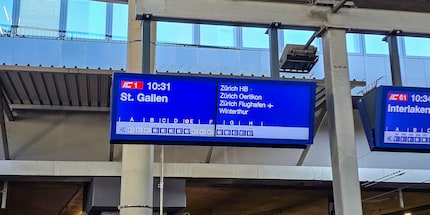
The Swiss Federal Railways’ iconic announcement tune has probably burned itself into every commuter’s brain. But depending on where you live in Switzerland, the jingle will sound very different in your head. Why? Because there are actually three different versions of it. What’s more, you’ll find them all in a game that you likely had on your phone for ages. Bear with me!
The Swiss national train system is divided into three of the four language regions: SBB, CFF and FFS. The abbreviations stand for Schweizerische Bundesbahnen in German, Chemins de fer fédéraux suisses in French and Ferrovie federali svizzere in Italian.
And while it’s not an official part of the company’s brand identity, there is in fact also a lesser-known Rhaeto-Romanic title: Viafiers federalas svizras, or VFF for short. Last but not least, the official English designation is Swiss federal railways, or SFR (translator’s note: SBB is the abbreviation used in practice in an English context).
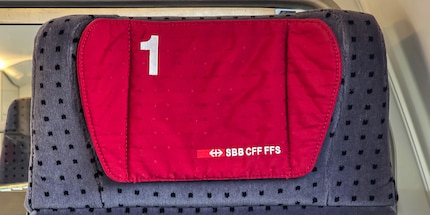
Just as the title was adapted to the national languages, so was the jingle. While the German-speaking population is accustomed to low-high-mid, the Romandie version goes high-mid-low. And in the Italian part of Switzerland, the melody is medium-medium-low.
I promise I’m not messing with you!
Depending on which Swiss station you’re standing at, you’ll hear a different announcement tune. The jingle played on the train is also adapted to whichever language region you’re currently in.
Depending on the train route, you may hear more than one SBB jingle. For example, on the IC1 from Genève-Aéroport to St Gallen – the longest direct connection in Switzerland – you’ll hear the French jingle until Fribourg, then the German jingle. The IC2 from Zurich HB to Lugano, on the other hand, changes from the German to the Italian jingle in Bellinzona.
If you want to listen to all three variants during a single train ride, you really only have one choice.

This special experience is only available on a trip through the beautiful canton of Valais. More precisely, on the Eurocity that runs three times a day on a four-hour direct service between Geneva, Switzerland and Milano Centrale, Italy. From Geneva to Sion, you’ll hear the French jingle, then the German jingle until Brig and the Italian jingle from Domodossola onwards.
The SBB jingle isn’t just iconic, but also a clever piece in terms of music theory. If you have a good ear and are familiar with the German naming conventions of notes, you might guess where this is going.
According to this post on the SBB community portal (in German), the scores for the various jingles weren’t chosen at random. User MartinaM explains the letters in the Swiss Federal Railways’ abbreviation correspond to the matching musical notes in the scale. Following the German naming conventions, SBB becomes «Es (pronounced «S», equivalent to E-flat) - B - B», «C - F - F» and «F - F - Es (again, pronounced «S», equivalent to E-flat)». This theory pops up on the internet from time to time, for example in Reddit threads.
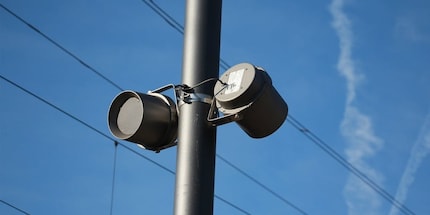
Unfortunately, I couldn’t find an official statement on this theory from SBB, nor did I find any sheet music. While the theory sounds reasonable, I don’t fully buy it. Let’s have another listen:
If you listen carefully, you can definitely hear more than two different notes per «dun», which doesn’t align with the theory.
I dug out my electric piano and decided to put my dusty primary school music skills to the test. Trying to play the three jingles, I come to the following conclusion: the final «dun» consists of a combination of notes. In the case of SBB, the notes played are «E-flat - B-flat - (B/G-flat/E-flat)», making that last «dun» a chord (three notes played simultaneously). With CFF, they’re «C - F - (F/D-flat)», and for FFS, they’re «F - F - (E-flat/F)», making that last «dun» an interval (two notes played simultaneously). So the theory is half-true.
Perhaps this also explains why there’s no separate jingle for the Rhaeto-Romanic VFF. But I’m no music expert, so feel free to dig into my little experiment and let me know what you find in the comments.
Now for the SBB minigame I claimed you were likely to have on your phone. You might be familiar with the Dinosaur Game in the Chrome browser: if your internet is down, Google will help you pass the time by providing a mini-game that also works offline.
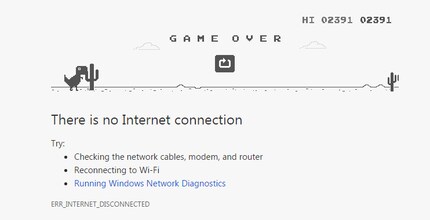
You’ll find something very similar in the official SBB app. The whole thing came to life a few years ago during a rework of the app by Zurich software developer Ubique – to the ignorance of even the SBB at the time (linked article in German). The Easter egg (link in German) is called #catchthetrain and is strongly reminiscent of the Chrome Dino in terms of gameplay.
To access the game, search for a connection between an identical point of departure and arrival. Next, tap the centre of the error message three times – et voilà, you can now set your own high score!
And the cherry on top? The game’s soundtrack is composed of the various SBB jingles – guaranteed to get stuck in your head!
I've been fascinated by all things keys, displays and speakers for basically as long as I can remember. As a journalist specialising in technology and society, I strive to create order in the jungle of tech jargon and confusing spec sheets.
Interesting facts about products, behind-the-scenes looks at manufacturers and deep-dives on interesting people.
Show all